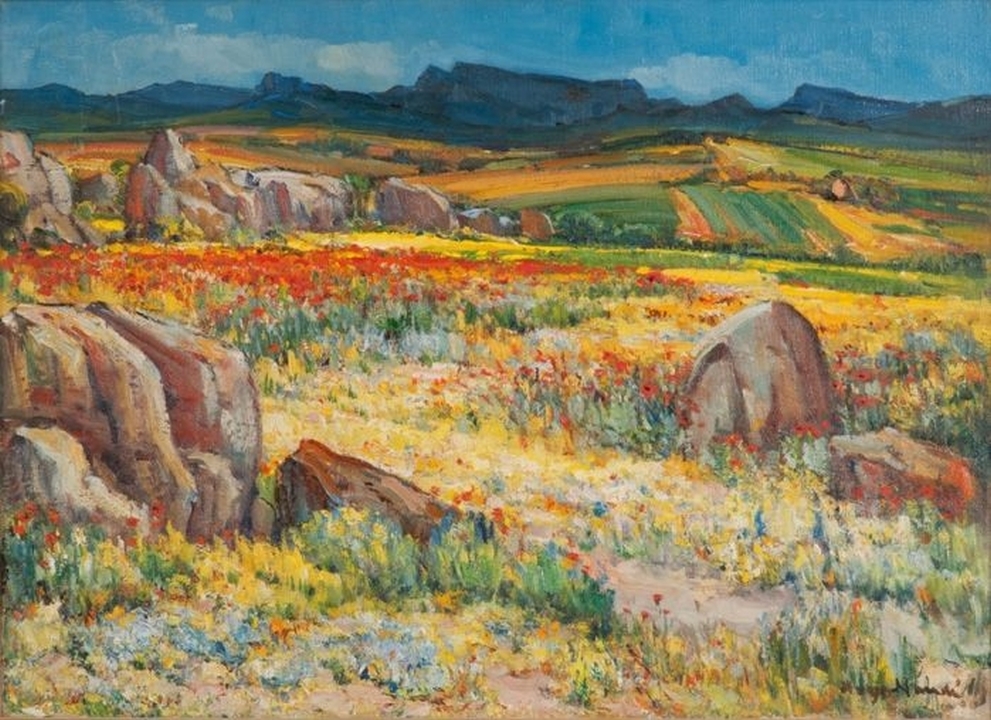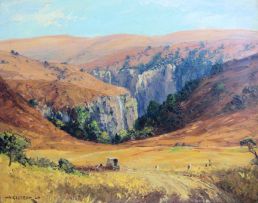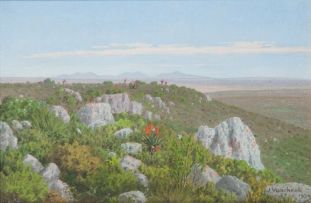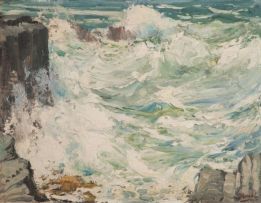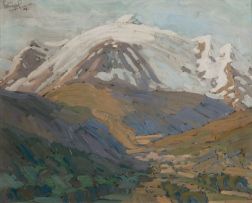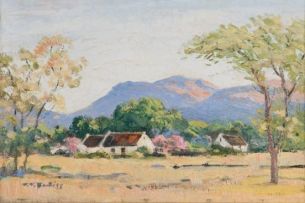Important South African Art
Live Auction, 7 November 2011
Evening Sale
Incl. Buyer's Premium & VAT
About this Item
signed
Notes
Namaqualand in Spring offers a view of one of Hugo Naudé's favourite painting sites. The artist chose the same view for his painting, Namaqualand, in the collection of the Worcester City Council and housed in the Hugo Naudé House. Esmé Berman clearly considered this a seminal work, sufficiently important to include in The Story of South African Painting with the following commentary:
Naudé completed scores of views across the flowering veld and farmlands of the Cape. He is probably best known, however, for his distinctive handling of the fields of brilliant orange daises which transform the semi-desert of Namaqualand each Spring.
The example illustrated in colour is an evocative, rather than imitative, image of the subject. Although it may be possible to identify the very spot from which the scene was painted, the artist himself was more concerned with capturing the quality of this particular landscape than with the definition of its details. In addition to the gay spring atmosphere communicated in his colours and spontaneous brushwork, there is a feeling, too, of open air and spaciousness, which results from Naudé's knowledgeable use of various pictorial devices. The raised horizon, the subtle guiding lines which lead the eye toward the distant mountains and the optical recessions of the cool colours in the top sector of the composition all contribute to the overall effect.
Hugo Naudé has been described as an Impressionist - largely in loose reference to the 'sketchy' brushwork that occurs, for instance in the foreground of this painting. The work was almost certainly completed in a single energetic session, the kind of 'fleeting moment' favoured by Impressionism...
His primary intention was to record his own perception of the natural scene and his observations led him to devise techniques which would convey the special character of the environment in which he painted. He was the first local artist to adapt his style to the distinctive sunlit atmosphere of the South African landscape.i
i Esmé Berman, The Story of South African Painting, A A Balkema, Cape Town and Rotterdam, 1975, pages 13 - 14.
Literature
cf. Esme Berman, The Story of South African Painting, Balkema, Cape Town, 1975, page 13, illustrated in colour.
